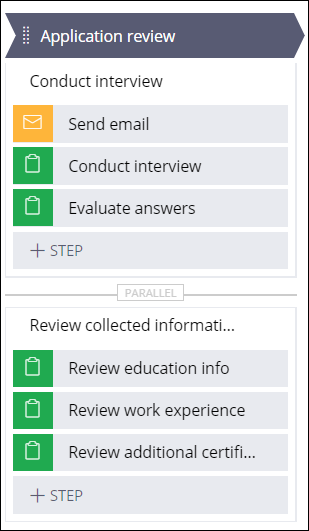Processes in a case life cycle
To resolve cases faster, you can also create multiple parallel processes within one stage. As a result, users can work simultaneously during the case cycle, for example, while one HR worker verifies documents collected from a job candidate, another HR worker runs a background check. For an improved working experience, you can define conditions for when a process starts, so that users only interact with actions that are relevant to specific scenarios, such as starting a process of additional interviews only when this action is relevant. By creating processes, you also speed up application development, since you can reuse processes in many different case types in your application.
Figure: A stage that includes two parallel processes

Populate your case life cycle with processes by completing the following tasks: